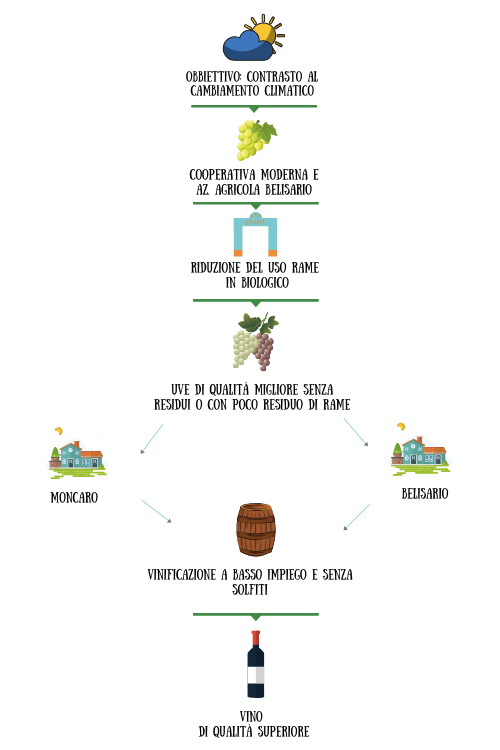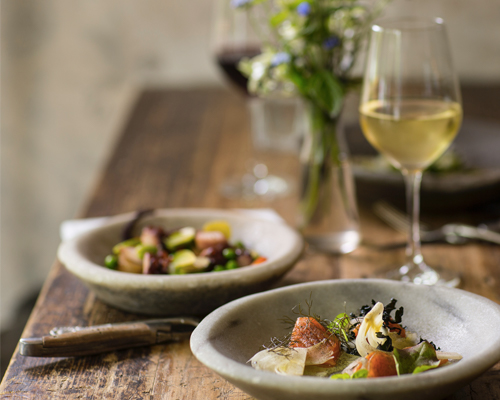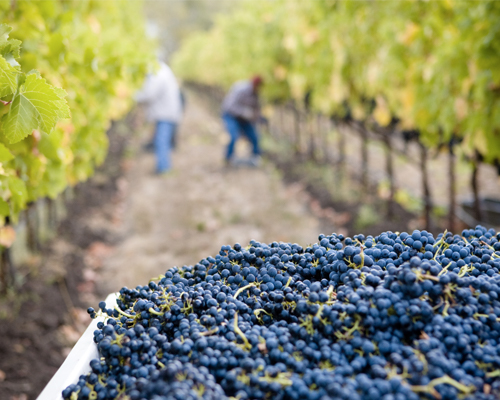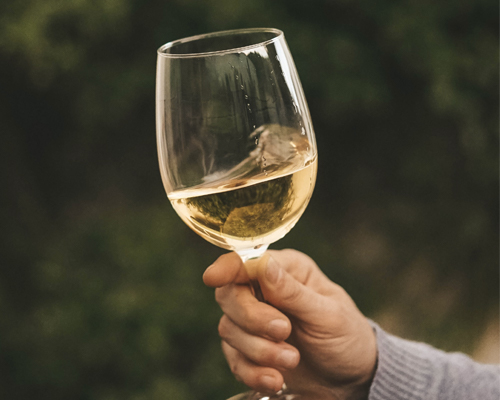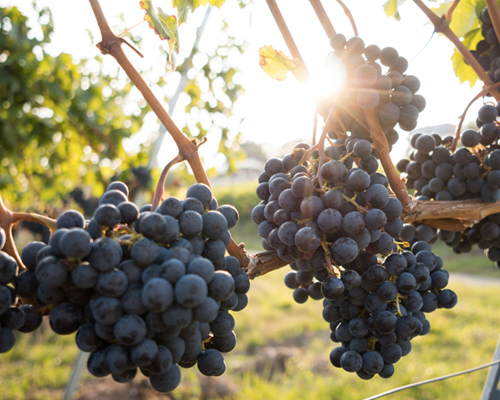THE INNOVATION OF VITINNOVA
Project actions and production process.
Introduction to the innovation
The use in the field of fungicides products alternative to copper, followed by the use of cryogenic gases and ozone for the sanitation of grapes and plants in the cellar and the use of selected and improved autochthones yeasts, suitable to reduce the presence of SO2 and H2S in wines, will be fundamental to obtaining wines without sulphites added or produced by yeasts.
Precision viticulture, in its infancy in Italy, will be applied on a farm scale over at least 80 hectares of vineyard to generate vigour maps, which will have to be validated for the purpose their use to define the “prescription maps”, i.e. the calibration of the cultivation aimed at increasing environmental sustainability and adaptation to climate change.
With the aim of fully achieving this latter objective, early monitoring of the ripening of grapes will also be introduced to verify the need for corrective action, to predict the date of harvest and to define the optimum time.
The use of grape harvesting machine even in the most slop areas (slopes over 20%) will increase the timeliness of intervention and the possibility of harvesting healthy grapes.
The project actions
| Action | Description |
|---|---|
| 1.1 | Definition of anti-mildew protection strategies for the organic viticulture based on the use of alternatives substances to copper |
| 1.2 | Application in the field of treatments with alternative substances to copper that can reduce or cancel the cupric contributions and ensure quality production |
| 1.3 | Data collection and processing of fungicides infection on vines treated with copper and alternative substances |
| 2.1 | Monitoring the vigour of the vineyards with the sensitivity acquired by Moderna and generation of vigour maps |
| 2.2 | Validation in the field of vigour maps and generation of prescription maps |
| 2.3 | Application in the field of cultivation calibrated on the basis of prescription maps in order to reduce variability (fertilization and defoliation site-specific) or value it (selective harvest) optimizing the management of the vineyard |
| 2.4 | Data collection and processing on ripening of grapes, grape quality and production capacity of vines in areas with differentiated vigour (low, medium and high vigour) |
| 3.1 | Sampling of grapes in vineyards by differentiating areas with different vigor, laboratory testing of their composition, preparation of ripening curves |
| 3.2 | Interpretation of the ripening curves and calibration of the cultivation techniques to be applied to regulate ripening for the purposes of adaptation to climate change (time, intensity and location of mechanical defoliation; spraying with natural antiperspirant, etc.) |
| 3.3 | Evaluation of the health status of ripe grapes, prompt harvesting based on follow up of grape maturation, the importance of production and composition of the grape must disaggregated according to the cultivation techniques applied for the regulation of ripening |
| 3.4 | Data processing of on ripening of grapes, grape quality and production capacity of vineyards subject to differentiated cultivation techniques for adaptation to climate change |
| 4.1 | No sulphites wine - Development of receiving and packaging of grapes (cryogenic gases, low temperature, sanitization installation with ozone and ozone water). Preparation of the grape must by flotation, in protection from oxygen. Microbiological analysis: pre/post treatment with cryogenic gases at low temperature. |
| 4.2 | Preparation of the inoculum of the “wine starter”, monitoring the fermentative process with control of fermentation parameters and microbiological control. Analysis of the dominance of the “inoculated starter” by molecular isolation and typing. |
| 4.3 | Clarification and packaging of wines with the help of cryogenic gases and monitoring with chemical analysis, “volatiloma” and sensory analysis of wines |
| 5.1 | Low sulphite wines. Receiving and packaging of whole clusters collected in boxes. Preparation of the grape must by flotation, in protection from oxygen. Microbiological analysis: pre/post treatment with cryogenic gases at low temperature. |
| 5.2 | Initial microbiological control of grapes must produced from whole clusters collected in boxes and real-time monitoring of the fermentation process of all batches for the production of wines with a low sulphite content with control of fermentation parameters (sugars, Alcohol, volatile acidity, pH, total acidity, malic acid and lactic acid, RAN, K) run twice a day by FOSS. |
| 5.3 | Packaging and monitoring of wines with chemical analysis by FOSS and final analysis of wines |
| 6.1 | Preparation and updating of the website and the Facebook page |
| 6.2 | Seminars, conferences, technical and demonstration meetings, newsletters, folding and final publication |
| 7.1 | Establishment of ATI |
| 7.2 | Initiation of project and coordination actions |
| 7.3 | Coordination of the operational group |
| 7.4 | Coordination of project closure |
The production process

